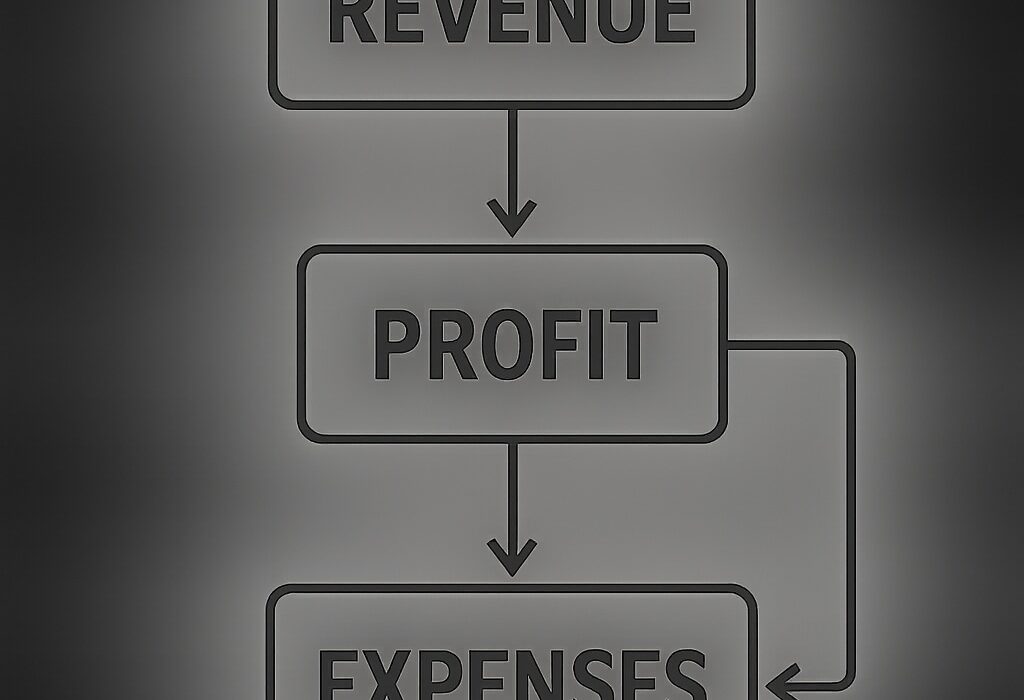
Discover the Profit-First cash-flow formula—learn how paying profit first transforms expenses into growth fuel in just 90 days.
Posted in :
Profit-First Formula: Flip Your Cash Flow
The 90-Day Profit Boost*, Rodney Ross challenges the age-old accounting mantra “Revenue – Expenses = Profit.” Instead, he flips the equation to Revenue – Profit = Expenses, teaching business owners to pay profit first and then allocate the remainder to operating costs . This simple shift rewires spending habits, forces smarter expense management, and builds a self-funding profit engine.
Why the Traditional Model Fails
Most businesses operate on the assumption that profit is whatever remains after bills are paid. This reactive approach leads to:
- Profit Leakage: Expenses expand to fill available revenue, leaving little or nothing for profit.
- Reactive Cost-Cutting: When profits fall short, companies slash budgets—often harming growth drivers like marketing and R&D.
- Owner Neglect: Founders and owners defer their own pay, creating personal cash-flow stress.
By contrast, the Profit-First formula makes profit a non-negotiable line item, ensuring every dollar is intentionally allocated.
The Profit-First Implementation Steps
Follow these steps to flip your cash-flow mindset and reclaim control of your bottom line:
1. Set Up Multiple Bank Accounts
- Income Account: All revenue deposits.
- Profit Account: Immediately transfer a predetermined percentage (e.g., 5–10%) of each deposit.
- Owner’s Pay: Allocate your salary or draw.
- Tax Reserve: Fund future tax liabilities.
- Operating Expenses: Everything else lives here.
Pro Tip: Automate transfers on deposit—use your bank’s scheduling or an app like Qonto to “pay yourself first” without manual effort.
- Determine Your Allocation Percentages
Ross recommends starting conservatively and adjusting quarterly:
| Account | Initial % Allocation | Goal % Over 12 Months |
|---|---|---|
| Profit | 5% | 15% |
| Owner’s Pay | 50% | 55% |
| Tax Reserve | 15% | 15% |
| Operating Expenses | 30% | 15% |
Track your actual vs. target allocations each month and incrementally shift percentages toward the goal.
- Conduct Quarterly “Pulse” Checks
Every 90 days, review your P&L and bank-account balances to:
- Validate: Are you hitting your Profit and Owner’s Pay targets?
- Adjust: If Operating Expenses exceed their cap, identify and eliminate the top two leakiest line items.
- Celebrate: Transfer any overages in the Profit account to an Investment or Reserve bucket.
This quarterly rhythm embeds accountability and ensures your formula gains traction.
Overcoming Common Objections
| Objection | Profit-First Response |
|---|---|
| “I can’t afford to pay profit first” | Start at 1%–2% and build the habit—profit compounds. |
| “My cash flow is too tight” | Treat profit as a non-negotiable expense; trim discretionary costs first. |
| “I don’t trust automation” | Begin with manual transfers weekly, then automate once you see results. |
“The hardest part isn’t the math; it’s creating the discipline to pay profit first,” Ross admits. “But once you see the safety net build, it becomes the easiest habit of all”
Case Study: 90-Day Profit Transformation
A service-based business implemented Profit-First with 5% initial profit allocation. After three months:
- Profit Account Growth: From \$0 to \$12,000
- Owner’s Pay Increase: +20% without raising prices
- Expense Reduction: Identified and eliminated two subscriptions saving \$1,200/year
The newfound cash cushion funded a targeted ad campaign that generated an additional \$30K in revenue—demonstrating the compounding power of Profit-First.
Tools & Resources
- Bank Automation: Qonto, TransferWise, or any bill-pay scheduler
- Profit-First Calculator: Free Spreadsheet Template
- Quarterly Review Checklist: Download PDF Guide
Action Steps – Start Today
- Open Your Profit Account: If you don’t have a separate profit account, open one before your next deposit.
- Set Your Initial %: Choose a conservative profit % (1–5%) and automate that transfer on every sale.
- Block Quarterly Review: Schedule a recurring 30-minute meeting to pulse-check and adjust allocations.
